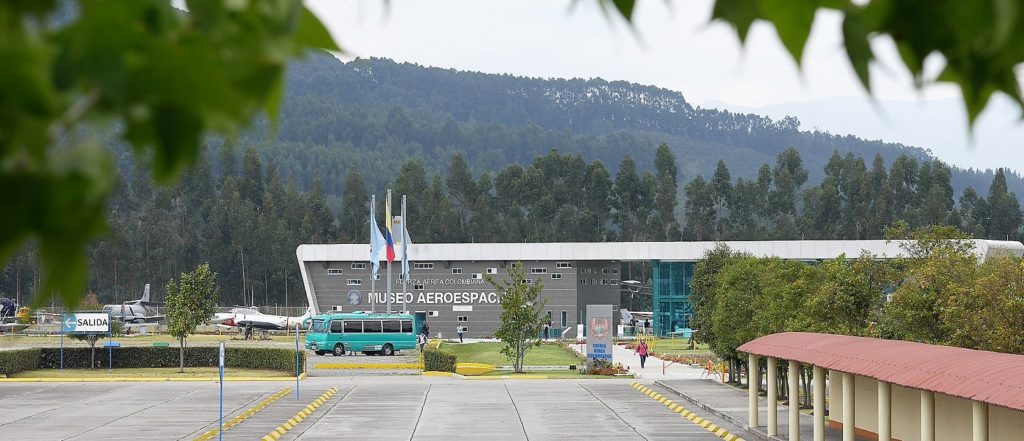The Aerospace Museum
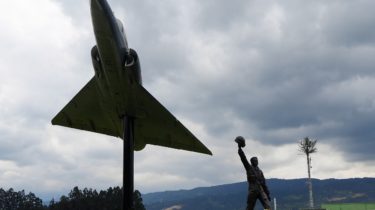
TO TOCANCIPA AND BEYOND!
This story first appeared in The Bogotá Post in 2018
It sounds like the start of a bad joke: an aerospace museum for a mega-city that still uses bendy-buses for mass transit. But just north of Bogotá, tucked behind the popular Parque Jaime Duque, in the small town of Tocancipá, the Fuerza Aerea Colombia Museo Aerospacial is welcoming visitors.
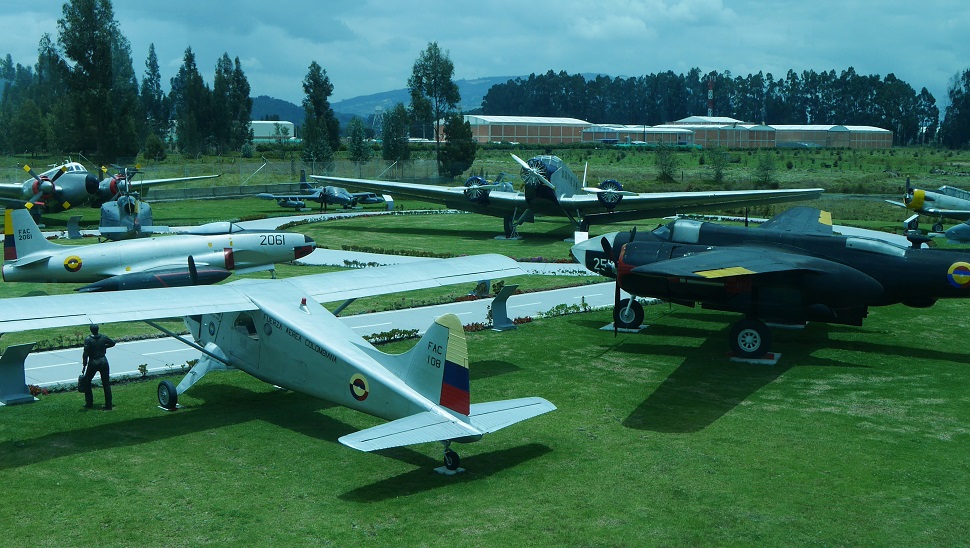
The site consists of a smart new building with an artfully posed Mirage jet – the same ones that until recently the Colombian air-force used to bomb the FARC – and a two-story display area with some historical displays (though not much mention of recent conflicts) and a vista of 26 veteran aircraft perched out the back.
The museum is perfectly sited next to Parque Jaime Duque (it shares the same car park) which in some ways unites the military and civic branches of Colombia’s aviation history. It is worth remembering that Colombia has the world’s second-oldest airline (Avianca, founded in 1919) and the amazing Duque was one if its early test pilots and pioneered its international flights island-hopping between continents in prop planes in 1949.
Duque was also a constructor, polymath, educator and founder of the eclectic park bearing his name where you can see the old DC4 that carried the 32-strong Colombia’s Olympic team (plus Miss Cundinamarca, and her mum) on a 70-hour trip to Melbourne in 1956. Rather bizarrely, this four-engine plane is mounted on a plinth that gyrates with the wind creating an enormous weather-vane.
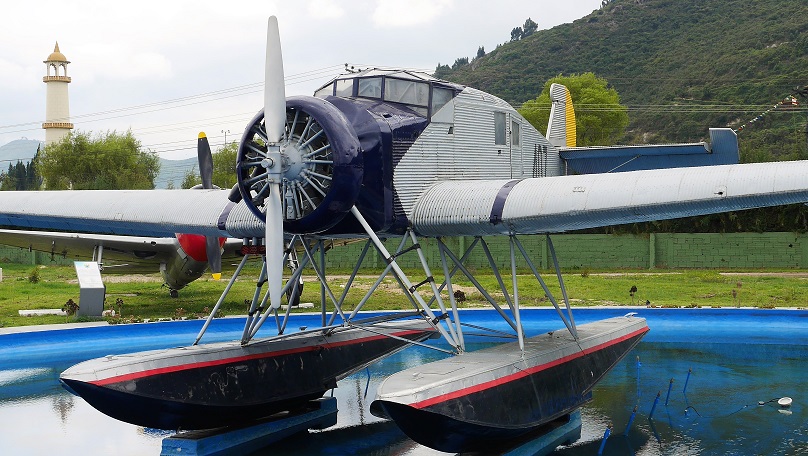
At the Aerospace Museum next door, the planes are more firmly rooted to the ground, apart from a remarkable Junkers W-34 float plane that has its own shallow pond. I was thrilled to find this perfectly-preserved specimen as I knew it from old photos at the Museum of the Magdalena River in Honda, and never dreamed I would see it in its crinkly corrugated reality. This old work-horse first arrived as a mail plane in 1929, was drafted to military operations during the Colombia-Peru border conflict in 1932 and went on to give 20 years more service.
WWII CLASSICS ON DISPLAY
Nearby is its stablemate, the spectacular tri-motor Junkers JU-52, another pre-WWII classic that was still ferrying troops in the 1950s.
I feel more comfortable among the older planes, perhaps because they rooted in Colombia’s more distant conflicts, such as the war with Peru and air patrols sent out into the Caribbean against Axis threats in WWII, usually combat versions of old Texan AT-6 trainers.
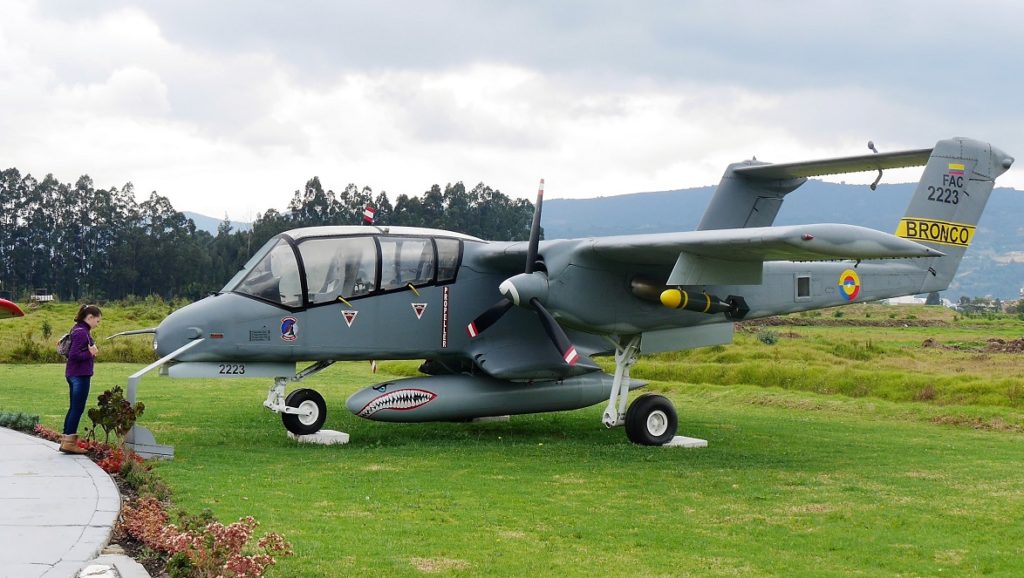
Suddenly my son gets excited by a stocky propeller-driven fighter-bomber: ‘Look. It’s Chupacabra,’ he says, running up to a US-built Thunderbolt P47D, another legendary warbird (13,000 were shipped out over the years) and, sure enough, with its bright red engine cowling it does look like the cartoon Planes plane.
Close by is a hulking Hercules Charlie-130, and the FAC’s first jet, a sleek T33 Silver Star, the same that startled the fledgling FARC in the assault on Marquetalia in 1964. There is also a rare Gavilan 358 (only about a dozen were ever built) a boxy 7-seater prop plane designed and built in Colombia.
Then there’s a remarkably simple-looking MASH-era Sioux helicopter, an eccentric Bronco bomber, a tiny Cessna Dragonfly jet fighter (which at first looks like a scale model until you realise that it’s supposed to look like a hobby sports car with wings) and many more quirky planes which – when you read the blurb – are all well adapted to ‘insurgent warfare’. That’s when the uncomfortable reality hits that these war planes only saw action in Colombia’s internal conflicts
Then I’m face to face with the ultimate classic plane, a C47, also known as the Skytrain, DC-3, or Dakota. The fact these planes first rolled down a runway in 1935 but are still operational in the Colombian conflict is quite surprising. The fact they are still lauded as the FAC’s most effective aerial weapon – in the form of the feared ‘Fantasma’ gunship – is even more amazing.
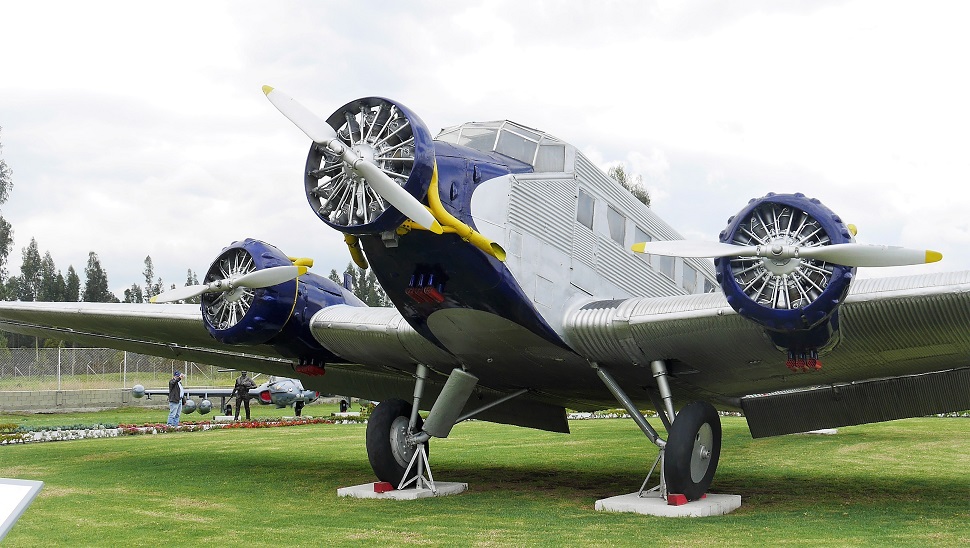
OK, the one parked here is in its civilian clothes, and was probably used for ferrying the top brass, but in recent years many of these slow and (relatively) quiet prop planes have been fitted with new infra-red detectors and electronic machine guns to rain deadly fire on armed groups hidden in dense jungle. Unfortunately, the Fantasma’s electronic wizardry cannot easily distinguish combatants from campesinos: in the countryside locals scramble to hide behind big trees when these big old birds lumber overhead.
THE FINAL FRONTIER?
But what about the final frontier? I realise after hours of looking at old planes that the ‘aerospace’ bit is lacking. No mention of Colombia’s first space mission as yet. Or is there some hidden plan to strap some Dragonflies and a T33 to an old Fantasma, light the candle, and launch it into orbit?
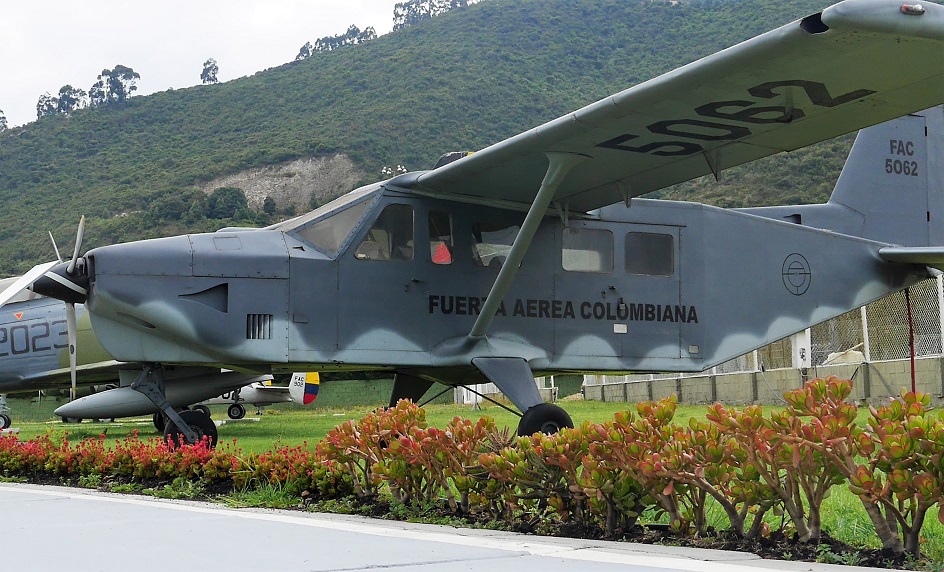
To be fair, the main aerospace building has yet to be built (bulldozers are busy flattening foundations for it) and currently entry to the museum is free. And the staff (all serving air-force by their impeccable uniforms) are friendly and helpful, and the all the information plaques have good English translations.
And, yes, for the whole morning I have been utterly absorbed by these flying relics which bring something tangible to the country’s tribulations. But I do look forward to a break with the past and some exhibits aimed higher; from Tocancipá to the stars.
GETTING THERE
The Fuerza Aerea Colombia Museo Aerospacial can be visited in the town of Tocancipá, entry free, Wednesdays to Sundays (and Monday bank holidays) from 9am to 3.30pm and can be combined with a visit to the Parque Jaime Duque attractions and zoo (Wednesdays to Sundays, 9.30am to 6pm, entry $42,000).
Tocancipá is 22kms north of Bogotá on the Autopista Norte (follow the signs for Parque Jaime Duque) and can be easily reached by car or public transport, which is frequent. You can catch a bus or share taxi from around the Portal Norte of the Transmilenio, or the Terminal de Satelite de Norte (the last stop on the Transmi). From the main street of Tocancipá it is a fifteen-minute walk to the attractions, or you can take a taxi.
